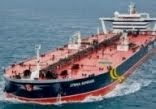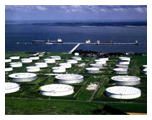Surging costs for drilling and maintenance risk hampering Statoil goal to boost the recovery rate at its Norwegian offshore oil fields to 60%, CEO Helge Lund said.
Statoil, which reached a 50% recovery rate for Norway in 2012, is forgoing the most expensive projects to cut investments and costs in the years ahead, Lund said in a speech in Trondheim, where the state-controlled company opened a research facility on increased oil recovery.
“Reaching the ambition of 60% is definitely a very, very steep climb,” he said. “Our ability to deliver high- value, cost-efficient IOR initiatives will be I think the real test.”
Norway’s government has warned producers to not let spending cuts hurt developments, especially time-critical projects aimed at raising recovery at existing fields. Statoil said in February it would lower planned investments through 2016 by 8% to boost returns amid rising costs, and is preparing to deepen those cuts toward 2020, according to internal documents seen by Bloomberg News.
“It’s important that cost saving programs don’t lead to resources staying in the ground,” Petroleum and Energy Minister Tord Lien said in an interview.
Statoil and other oil companies have complained that altered framework conditions, such as a tax increase last year, are making investments in increased-recovery projects less profitable. Measures include new drilling techniques and water, gas and chemical injection in the reservoirs.
Raising the Norwegian average recovery rate to 55% would yield production equivalent to the Johan Sverdrup field, the biggest discovery off Norway in decades with as much as 2.9 Bbbl of oil, Lund said.
“It gets steeper for every percentage point,” he said. “But the reward is also very high.”
Statoil has said it’s reviewing plans to boost production at its Snorre field by 300 Mmbbl of oil by building a new platform. Shell, in April shelved plans to boost recovery from its Ormen Lange field in the Norwegian Sea.
Lund also said the efforts aren’t helped by recent political wrangling in parliament, where a minority tried to force so-called electrification on offshore developments in the Utsira High area, including Sverdrup.
“The affair around Utsira created uncertainty in the oil and gas industry, and significant uncertainty also among investors,” Lund said in an interview. “It’s important that we come back to the formulas that have worked perfectly over the past 40 years.”
Norway’s Prime Minister Erna Solberg has vowed to protect the industry from political interference.
“We’ve had framework conditions based on broad, large compromises in parliament over the last 45 years,” Lien said today. “I hope we can go back to that and that we won’t experience more attempts at challenging the model that has worked and served Norwegian taxpayers and workers very well, not to speak of the state finances.”
Statoil’s increased recovery measures in Norway, from water and gas injection to horizontal wells, have until now added 7.5 Bbbl to its oil reserves. The company has given no time frame for when it plans to reach a 60% recovery rate.
Providing useful resources, articles and writings on crude oil, other petroleum products, energy and gas. By ExportGeneral Corporation and services, UK, online.

 ExportGeneral Corp is a leader in the of Nigerian Bonny Light Crude Oil (BLCO) sales market. As a privately held company, Export General Corp is committed to and is focused on delivering reliable services to all her clients.
ExportGeneral Corp is a leader in the of Nigerian Bonny Light Crude Oil (BLCO) sales market. As a privately held company, Export General Corp is committed to and is focused on delivering reliable services to all her clients.  Export General Corporation has an excellent track record of reliability in the supply of Bonny light crude oil, BLCO. We protect our buyers with 2% Performance Bond while we also expect protection from our customers with bank instrument from the world's top banks. We deliver on TTO, TTT, CIF and FOB basis.
Export General Corporation has an excellent track record of reliability in the supply of Bonny light crude oil, BLCO. We protect our buyers with 2% Performance Bond while we also expect protection from our customers with bank instrument from the world's top banks. We deliver on TTO, TTT, CIF and FOB basis.


No comments :
Post a Comment